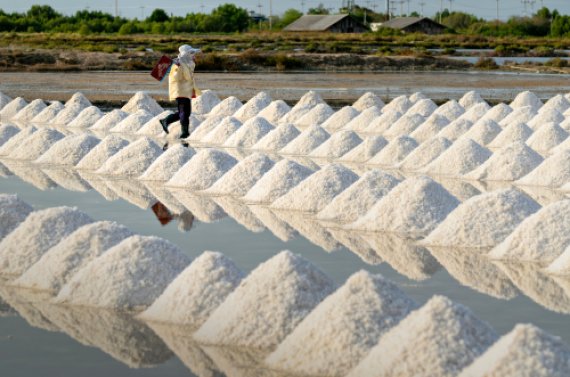©Shutterstock
Suppose you dissolve a scoop of cocoa powder in a glass of hot milk. After stirring the powder in the milk, you gently tap your spoon against the bottom of the glass. What sound does this make? It is a sound whose tone rises slowly but steadily. This is the Hot Chocolate Effect, says Saskia van Ruth, professor of Food authenticity and Integrity at WUR. Stirring causes little bubbles of air to enter the fluid, which clear again after you stop. This reduces the compressibility of the solution and causes the pitch of the sound to rise. Physicists have known this principle for about sixty years.
Spectroscopy
However, Van Ruth can now convert this principle into an accurate sound curve using new equipment. The new machine, developed at the University College Cork in Ireland, uses Broadband Acoustic Resonance Dissolution Spectroscopy. Together with the Irish scientists, Van Ruth has now discovered that chemical compounds dissolved in water each have their own unique sound curve. In an article published in Food Research International, she shows how she used this method to differentiate between various types of salt.
Himalayan salt
There is common table salt, low-sodium salt, seat salt, Himalayan salt, other coloured and special types of salt, and road salt, Van Ruth explains. Road salt costs about half a euro per kilogramme, while the special Yuki Shio salt is sold at one hundred euros for a kilogramme. It is important to be able to differentiate between these to fight food fraud. Her research revealed that this can be done using a sound test.
Table salt, which is approximately 95 percent sodium chloride, has a different sound curve than low-sodium salt, which only has about 50 percent sodium chloride and higher amounts of potassium chloride and magnesium chloride. Sea salt and Himalayan salt contain more minerals. These minerals affect the amount of air bubbles that enter the solution, causing these salts to have different sounds than low-mineral salts.
Characteristic
Van Ruth used the new analysis equipment to test various pure salts and combinations thereof. With the sound curves, she was able to make very good predictions of the composition of the salt, but she has not yet fully understood all aspects of the salt that are responsible for the characteristic sound curve. She will therefore have a PhD candidate carry out a follow-up study at WUR. ‘We must first know more about the process before we can use sound to inspect food.’
Sand
Not only salt has its characteristic sound. Sand also has its own sound, Van Ruth established from a follow-up study. She collected sand from nine different beaches along the coast of the North Sea and examined whether she could use the new spectrometer to trace back the location from which the sand was collected. This turned out to be the case. ‘Sand does not dissolve in water, but it does contain particles such as traces of shells that do dissolve in acidic solutions. These traces are different for each location due to the flow of the water, causing each part of the beach to have its own sound.’
Exposition
Following this study, Van Ruth has contacted photograph Bert Spiertz, who made photos of the North Sea shore. They are now working on an exposition called The Sight and Sound of Sand, which will be displayed on the Wageningen campus in early 2019.
Sound analysis of salt
Source: RIKILT, Wageningen University and Research

